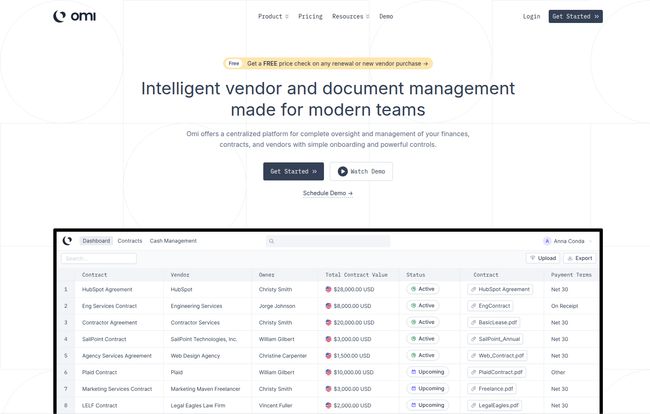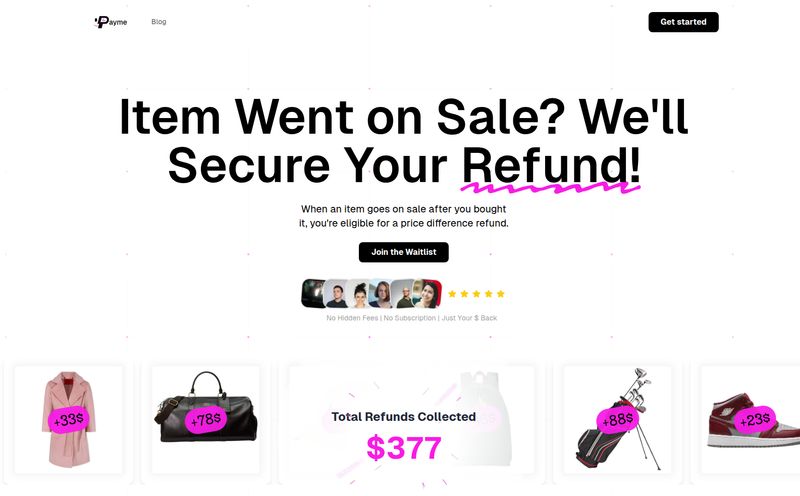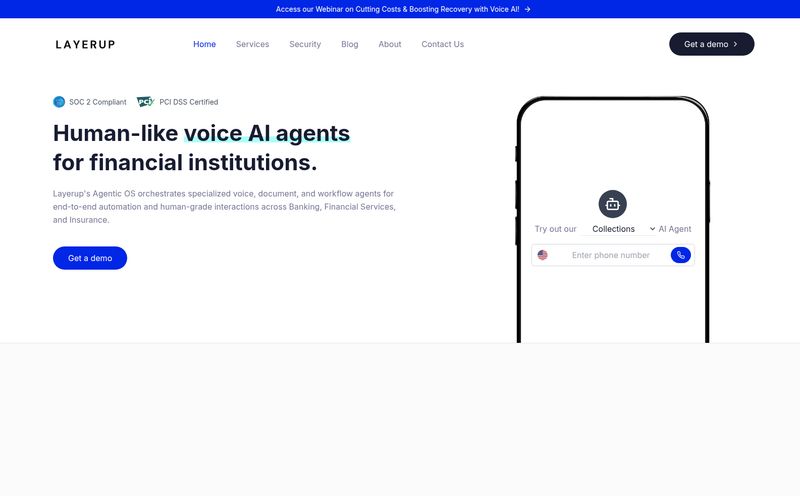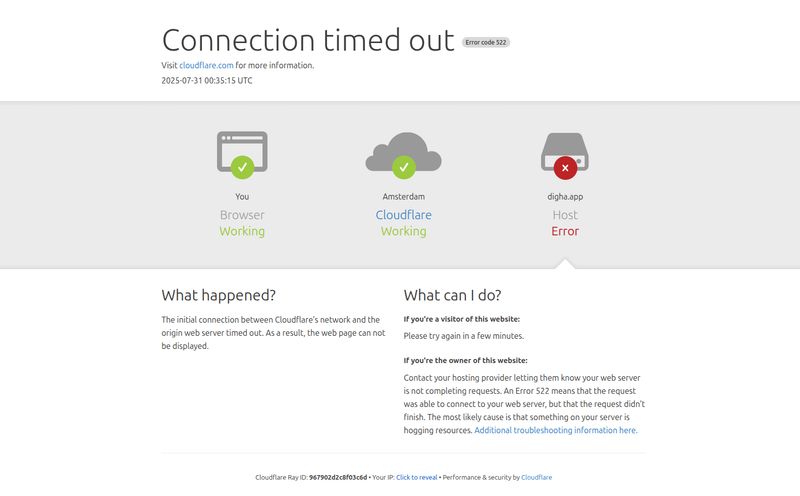We’ve all been there. That sinking feeling in your stomach when you see the credit card statement. A surprise five-figure charge from a SaaS tool you forgot was on auto-renew. The ensuing frantic search through shared drives, old email chains, and Slack DMs, trying to find the original contract owner who, of course, left the company six months ago. Sound familiar? Yeah, I thought so.
For years, the default for managing contracts and vendors at startups and even some surprisingly large companies has been… the spreadsheet. You know the one. A glorious, multi-tabbed, color-coded monstrosity that was one person’s magnum opus and is now everyone’s shared nightmare. It’s a system held together by hope, caffeine, and a complex web of VLOOKUPs that no one dares touch.
This is the chaotic world that Omi, an AI-powered document management platform, promises to fix. They’re making a big claim: to be the “single source of truth for all of your finance and operations.” As someone who’s seen a lot of tools promise the world, I’m always a bit skeptical. So, I took a look under the hood to see if Omi is really the answer or just another subscription to add to the pile.
So, What Exactly is Omi Anyway?
At its core, Omi is a centralized hub for your finance and operations teams. Think of it less as a simple document storage box and more like a smart assistant for all your contracts and vendors. It uses AI to pull key information out of your contracts—things like renewal dates, payment terms, and notice periods—and puts it all on a clean, searchable dashboard. The whole idea is to get you out of reactive fire-fighting mode and into a more proactive, strategic position.
Instead of your contracts living in ten different places (a little in Google Drive, some in someone’s inbox, a few printed in a filing cabinet from 2018), Omi brings them all into one place. It then connects the dots between contracts, vendors, and your actual spending. A simple concept, but one that’s incredibly difficult to execute with a simple spreadsheet.

Visit Omi
The Spreadsheet Struggle is a Real Pain
I can’t stress this enough: the problem Omi is trying to solve is a very, very real one. The image on their site showing a tangled web of spreadsheets, documents, and communication channels feels almost too personal. It’s the digital equivalent of that one junk drawer everyone has in their kitchen.
The traditional spreadsheet method has so many flaws. You have zero visibility into upcoming renewals unless you manually check. There's no easy way to see all contracts associated with a single vendor. And trying to get a clear picture of your total SaaS spend? Good luck. It often requires a full-blown archaeological dig.
I saw a quote on their site from a YC Founder that really hit home. It said, “Omi makes it easy to keep track of our vendors and gives us automated reporting that our previous setup on excel didn’t happen wasen.” Now, I'm guessing they meant “wasn’t,” but the typo honestly makes it feel more authentic. We’ve all written a frustrated Slack message with a typo or two. It captures the exact sentiment: the old way just doesn't work once you start to scale.
A Look at Omi's Core Features
Okay, so it promises to solve a big problem. But how does it actually do it? Let's break down the main components.
Centralized Contract and Vendor Management
This is the foundation of everything. You get one unified platform to manage every contract and every vendor relationship. No more guessing games. You can easily search for a specific contract or pull up a vendor's entire history in seconds. It’s the kind of organizational bliss that operations managers dream about. This alone is a huge step up from the chaos of shared drives.
Automated Renewals That Actually Work
For me, this is the killer feature. Omi automatically flags renewal dates and sends notifications via email or Slack. This gives you time—precious, precious time—to decide if you want to renew, renegotiate, or cancel a service. This single feature can save companies thousands, if not tens of thousands, of dollars by preventing unwanted auto-renewals. It’s the difference between controlling your budget and your budget controlling you.
Financial Controls and Spend Visibility
Omi connects to your financial world. With integrations for tools like QuickBooks and Xero and features like invoice reconciliation, it provides a much clearer picture of where your money is going. You can see your spend by vendor, by category, or over time. This data is gold for CFOs and finance teams trying to budget effectively and make smarter purchasing decisions. It turns your spending from a vague mystery into a clear, actionable report.
Streamlined Procurement and Audits
When someone on the team needs a new tool, the process can be messy. Omi offers intake and procurement workflows to standardize this. And when the auditors come knocking (and they always do), having a complete, organized, and easily searchable record of all your contracts and payments is a godsend. It transforms a multi-week fire drill into a much calmer, more manageable task.
Who is Omi Really For?
Look, if you’re a solo freelancer with three software subscriptions, you dont need Omi. A Google Sheet will do just fine. But this platform isn’t built for you.
Omi hits its stride with growing teams. Think startups that have just closed a Series A or B, or established businesses with 50-500 employees. It’s for the stage where the founding team can no longer keep all the vendor details in their heads and the finance lead is starting to lose sleep over the sheer volume of contracts. If you have a dedicated operations or finance person (or team), and they’re spending a significant chunk of their time chasing down contract details, Omi is speaking your language.
Let's Talk Money: Omi's Pricing Plans
I was pleasantly surprised to see a transparent pricing page. So many B2B SaaS companies hide behind a “Contact Us for a Demo” button, which is always a bit of a red flag for me. Omi lays it out pretty clearly.
- The Free Plan: This is your entry point. It allows you to manage up to 10 contracts and gives you the basic notifications. It’s a genuinely useful free tier, perfect for a small team just starting to feel the pain and wanting to test the waters. A very smart move on their part.
- The Team Plan ($99/month): This seems like the sweet spot for most growing companies. It bumps you up to 40 contracts and adds critical features like Google SSO, bank transaction sync, and accounting reconciliation. The price feels very fair for the value it provides, especially when you consider it could save you from one bad auto-renewal that costs 10x the annual fee.
- The Enterprise Plan (Custom Pricing): This is the standard “call us” plan for larger organizations that need unlimited everything—uploads, users, advanced permissions, and dedicated support.
My take? The pricing is solid. It scales logically with a company’s growth and the Free plan is a fantastic, no-risk way to see if the platform is a good fit for your workflow.
The Good, The Bad, and The Complicated
No tool is perfect, right? Here’s my honest breakdown.
What I really like is the laser focus on a genuine business problem. Omi isn't trying to be a dozen things at once. It’s built to manage contracts, vendors, and the associated spend, and it does that well. The automated notifications and financial integrations are powerful. It’s a clean, modern tool that brings order to chaos.
As for potential hurdles, you have to remember that this isn't a magic wand. You still need to do the work of gathering all your contracts and getting them into the system. The initial setup could be a bit of a project, depending on how messy your current situation is. It also requires integration with your existing systems to get the full benefit, which means you need buy-in from your team. It’s an investment of time upfront to save a lot more time later.
Final Thoughts: Is Omi Worth the Switch from Spreadsheets?
So, here’s the bottom line. If your contract management spreadsheet is still working for you, if it's neat and tidy and gives you no stress, then by all means, stick with it. Don’t fix what isn’t broken.
But if you’ve read this far and found yourself nodding along, if the story of the surprise auto-renewal felt a little too real, then Omi is absolutely worth a serious look. It represents a step up in operational maturity. It’s graduating from a shoebox full of receipts to a proper accounting system. It’s for teams that are ready to stop managing their business reactively and start being strategic about their spending and vendor relationships.
For the teams stuck in spreadsheet hell, Omi doesn’t just look like a better option; it looks like a lifeline.
Frequently Asked Questions
- What makes Omi different from just using a spreadsheet?
- While a spreadsheet is a static list, Omi is a dynamic system. It actively scans your contracts for key dates, sends you automated alerts for renewals, integrates with your bank and accounting software for real-time spend visibility, and provides a collaborative platform for your entire team.
- Is there a free trial for the paid plans?
- Omi offers a permanently Free plan for up to 10 contracts, which is the best way to trial the core functionality. You can get a feel for the platform's workflow and decide if upgrading to the Team plan is right for you when you outgrow it.
- What kind of integrations does Omi support?
- Omi integrates with a variety of essential business tools. Based on their site, this includes communication platforms like Slack and Gmail, storage like Google Drive, and accounting software like QuickBooks, Xero, and NetSuite.
- How secure is my contract data with Omi?
- While you should always check the company's specific security policies, platforms like Omi that handle sensitive financial and contractual data typically employ enterprise-grade security measures, including encryption and secure cloud infrastructure, to protect your information.
- Is Omi difficult to set up?
- The initial setup involves gathering and uploading your existing contracts. The level of effort depends on how organized your documents currently are. Once they're in the system, Omi's AI helps automate the data extraction, and the platform itself is designed to be user-friendly.
- Can I cancel my Omi plan at any time?
- Yes, according to their FAQ, you can cancel your subscription at any time. For monthly plans, the cancellation would typically take effect at the end of the current billing cycle.



